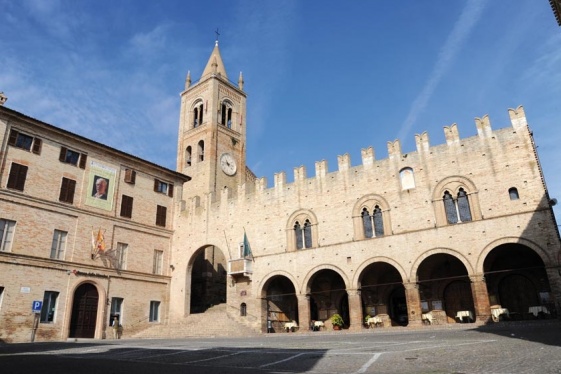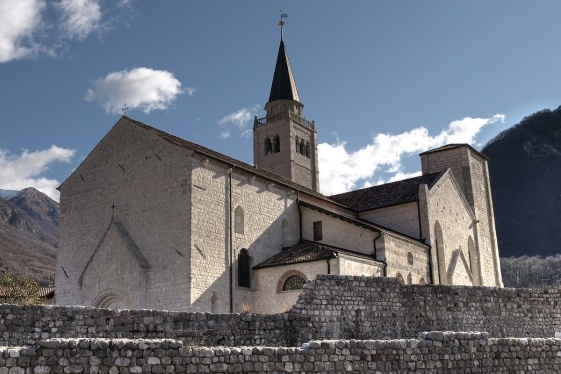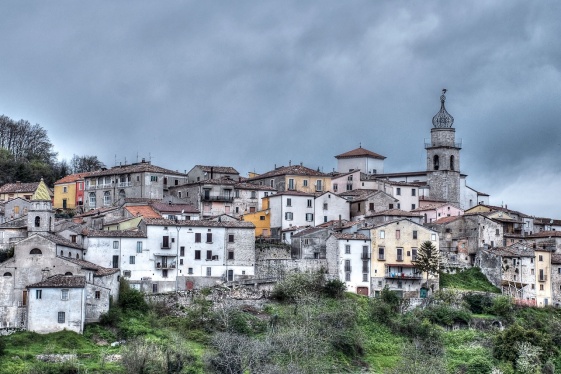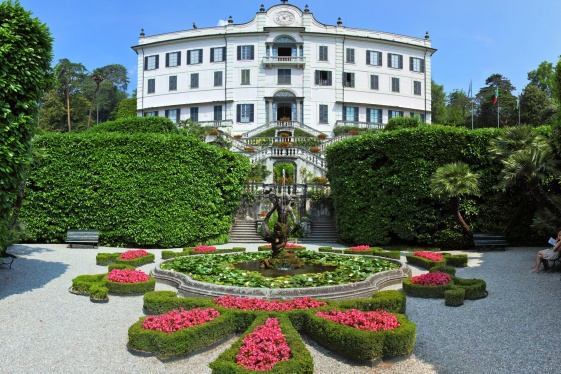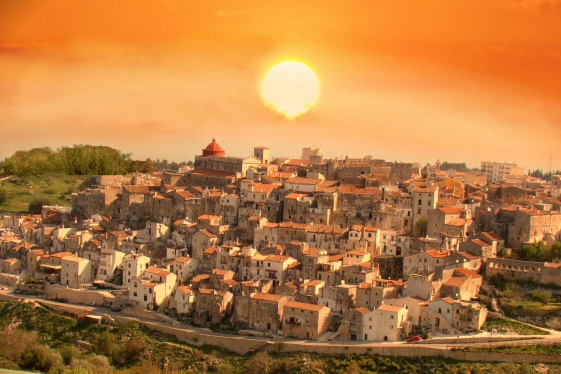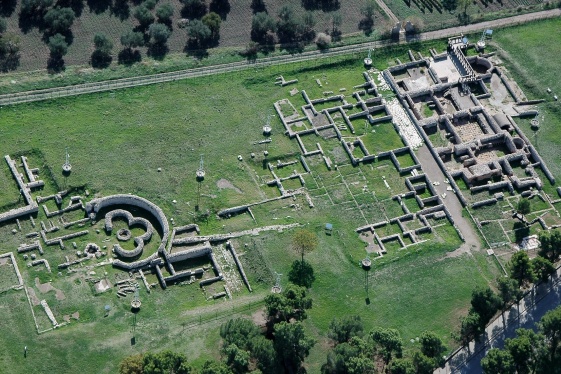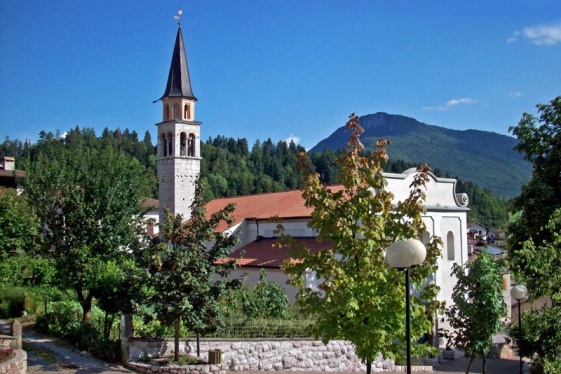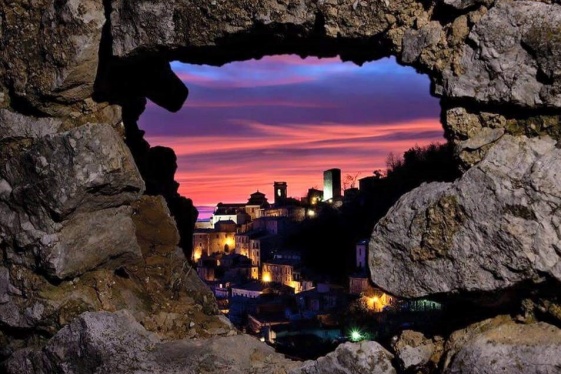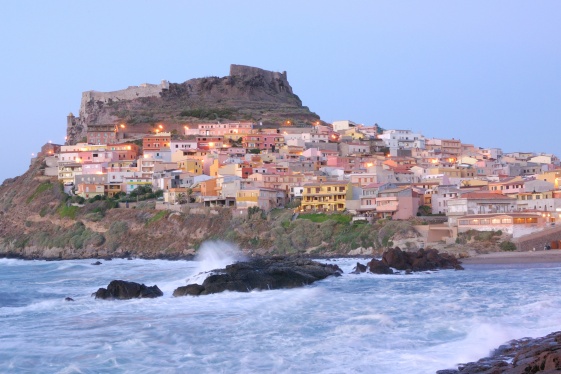Italian little Italies: Montecassiano, the land of brotherhoods
The borgo of Montecassiano dominates the hill between the Monocchia river and the Potenza river. Its medieval identity is enclosed within the high walls, which still surround the old town, that were built starting from 1437, and that separate it from more recent buildings. The urban structure developed in concentric streets that followed the confor...
READ MOREItalian little Italies: Venzone, a living room within the walls
Venzone, in the province of Udine, in Friuli Venezia Giulia, owes its fortune to the fact that it has been an obligatory passage to the north since the time of the Celts in 500 BC. Then the Romans made the town one of their stands along the route of the Via Julia Augusta from the site of Aquileia to Norico (now Central Austria). Such information is...
READ MOREItalian little Italies: Sepino, at the crossroads of the sheep tracks
Sepino was born as a place where flocks and shepherds who travelled could stop and rest. Because of the Samnite wars, the inhabitants escaped on the mountain Terravecchia, where they built a city said by Livio to be “very strong and very powerful”; however, it was soon conquered by the Romans. They built the new city by adapting the cardo and decum...
READ MOREItalian little Italies: Garbagna, Art in the hills of cherry trees
Garbagna is the most important center of Val Grue (Grue Valley). It is a medieval borgo, whose name derives from the Latin garbus, which means “bush”. The first archive news about Garbagna appear on March 29, 945: a diploma of Ugo of Provence, the king of Italyof Carolingian origin. In this document the king confers the borgo to Count Elisiardo, a...
READ MOREItalian little Italies: Tremezzo, four villages between the lake and the mountains
"Finally we saw the lovely beach of Tremezzina, whose charming valleys enjoy the same climate as Rome. Those who live in Milan and suffer the cold, in fact, come here to spend the winter; there are more and more buildings on the green hills which are reflected in the lake. They can’t be called “Palaces”, but it is not enough to define them as just...
READ MOREItalian little Italies: Vico del Gargano. Oranges, love and will of life
At first glance Vico seems to be poor in relation to other villages, such as Vieste and Peschici that are beautiful, clean and touristic, in the Gargano. Vico del Gargano looks like something picturesque and decadent, like classical ruins in paintings by eighteenth century landscape artists. While other places are no longer a novelty, Vico shows a...
READ MOREItalian little Italies: Venosa, the City of Horace
In the Archaeological Park one can visit the Roman baths, remains of private Roman houses (domus) and the amphitheatre. Archaeological excavations have also brought to light a patrician house of the 1st century AD, called “the House of Horace,” Jewish catacombs containing a series of hypogei discovered in 1853 (the presence of a large Jewish commu...
READ MOREItalian Little Italies: San Lorenzo in Banale, Efforts hidden within the walls
The village set on a large sunny green terrace overlooks the valley with the Dolomites of Brenta behind it. San Lorenzo is an ancient village created by the merging of seven Villas: Berghi, Pergnano, Senaso, Dolaso, Prato, Prusa and Glolo. Placed at the entrance of the beautiful Ambiez Valley, you can access the Adamello-Brenta Nature Park from the...
READ MOREItalian Little Italies: San Donato Val di Comino, land of passage
San Donato is a village of ancient houses leaned on the slopes of the Apennines, on the cliffs of Monte Pizzuto, covered by beech forests. The Val di Comino opens southwards as a bowl, with its tiny country streets and prismatic fields of green and yellow; northwards, beyond mountains, there is the wilderness of the National Park of Abruzzo, in its...
READ MOREItalian Little Italies: Castelsardo, A Fortress on the Sea
Perched on a large promontory facing the sea, Castelsardo with its Citadel, o Casteddu quarter - the maze of twisted narrow streets in the old town - offers an enchanting vision. In fact just about anywhere you look, from whatever perspective - with the exception of the view of the modern quarter of Pianedda and the seaside area by the Marine - the...
READ MORE


